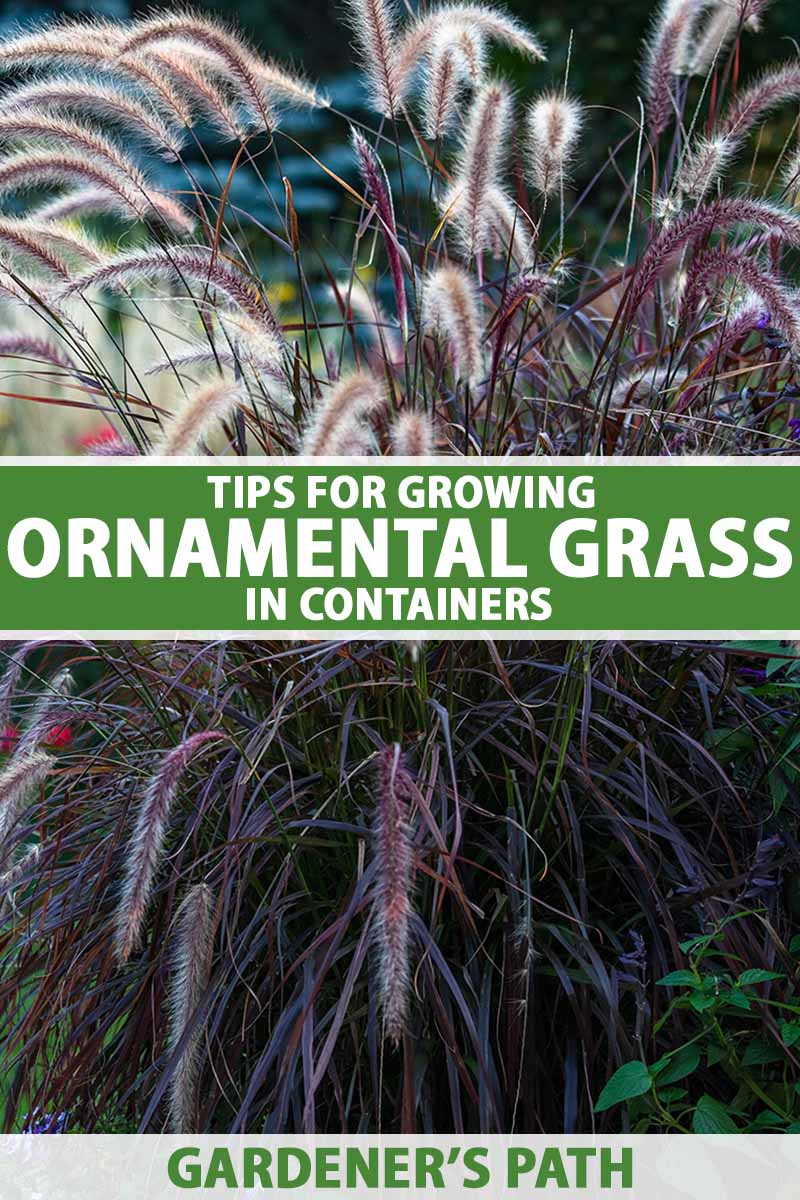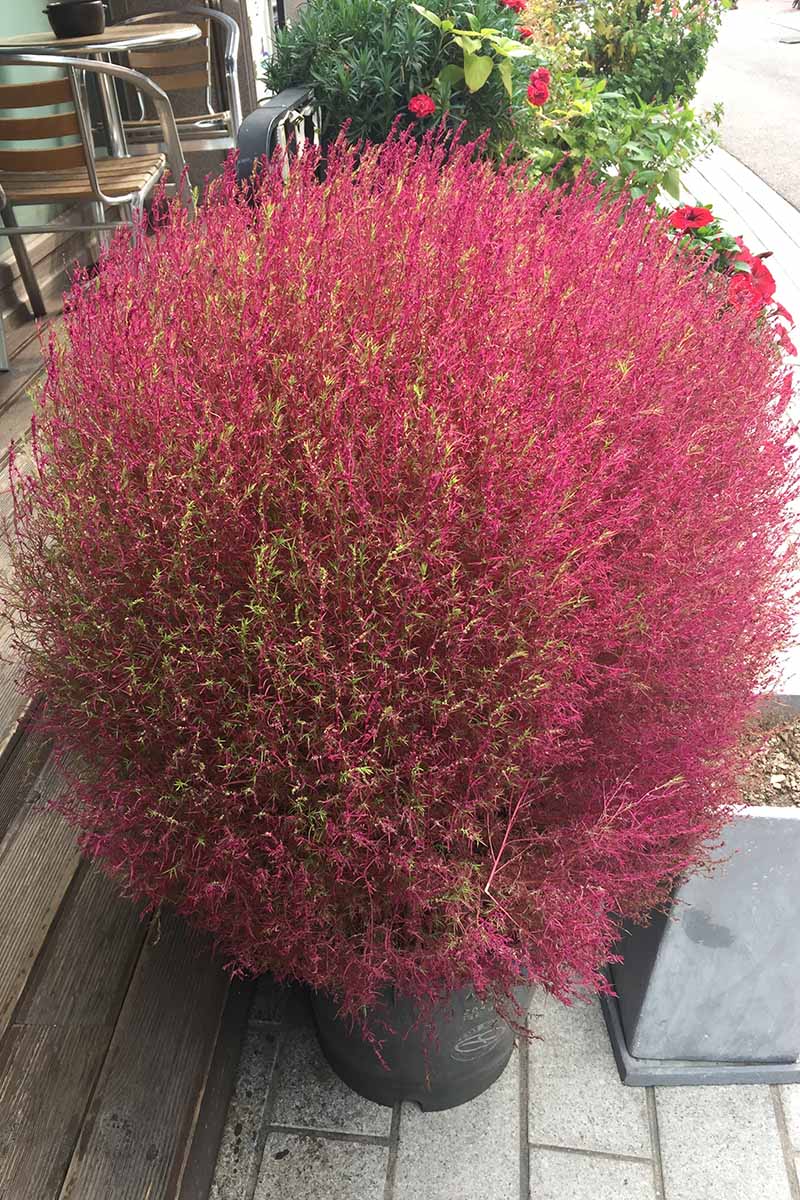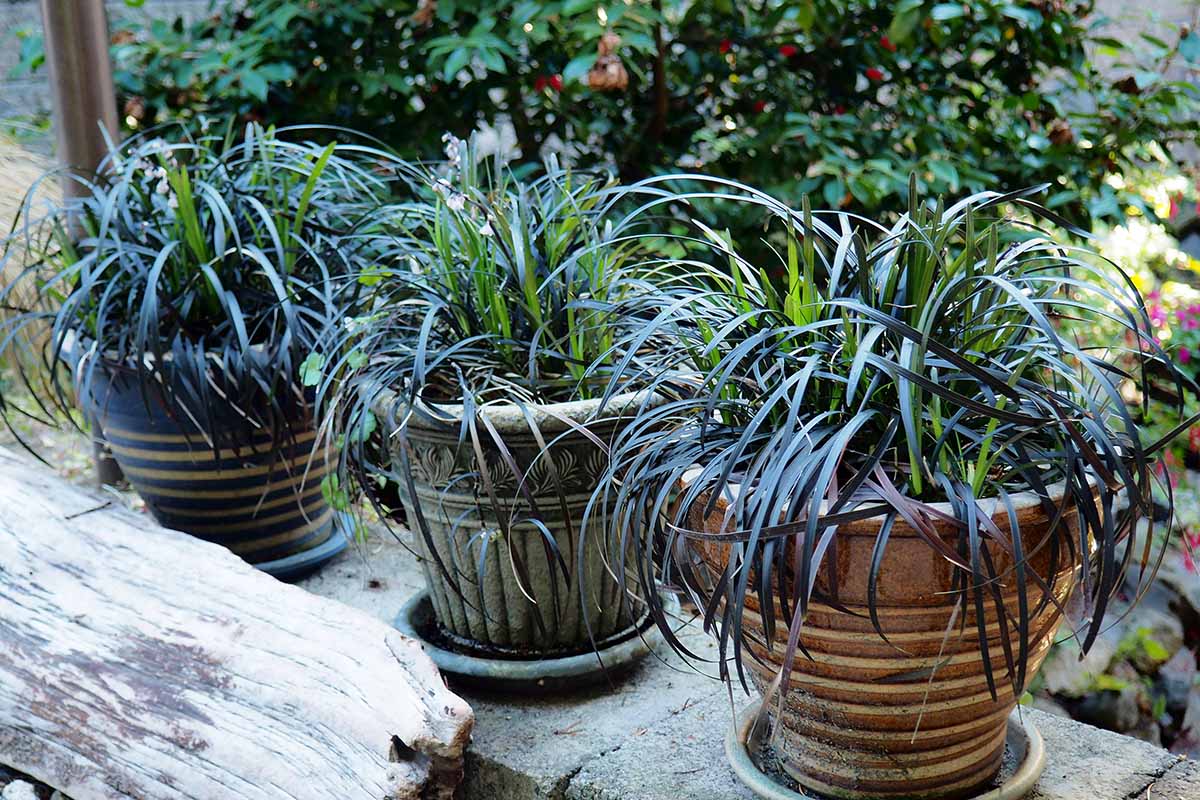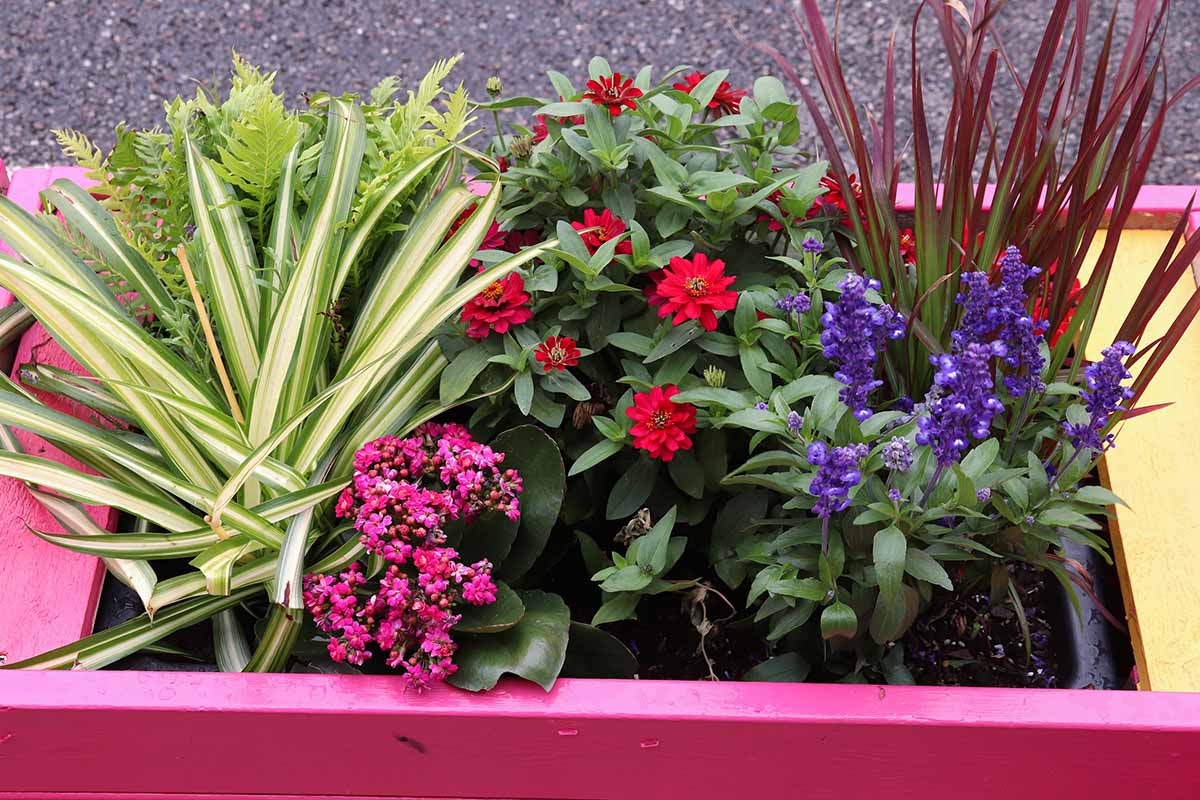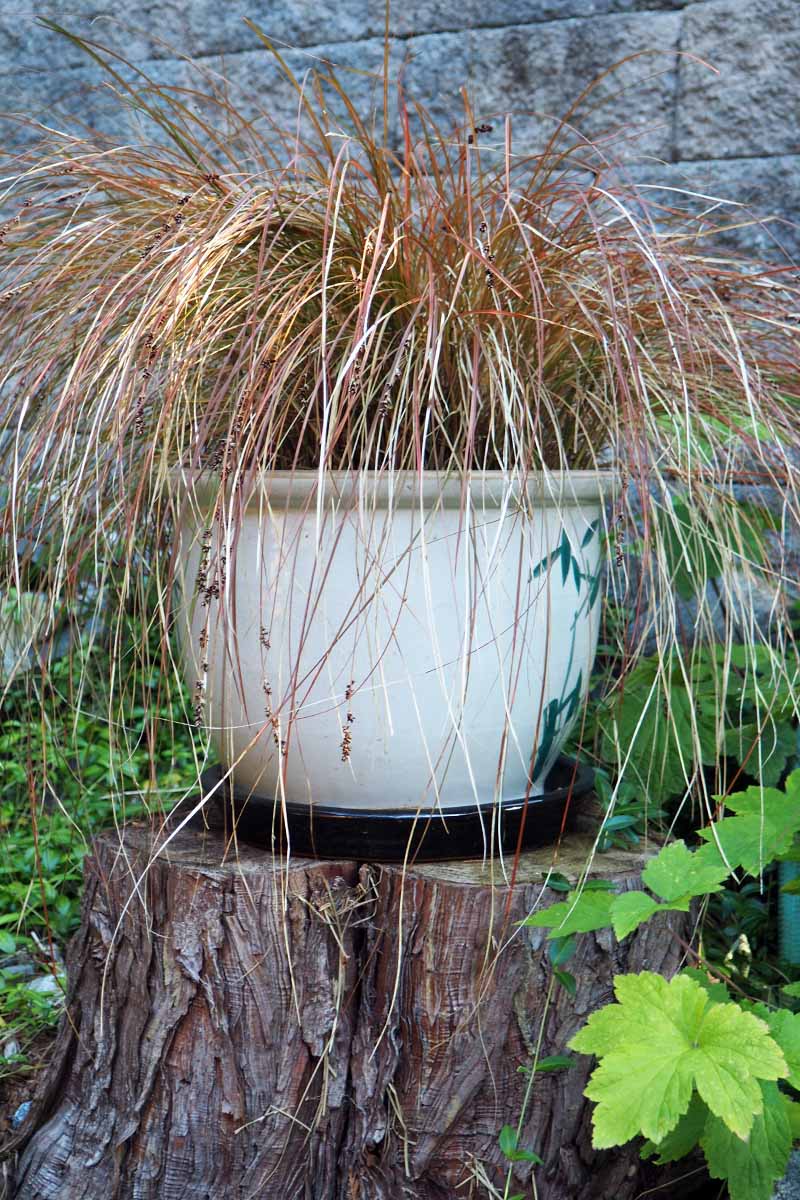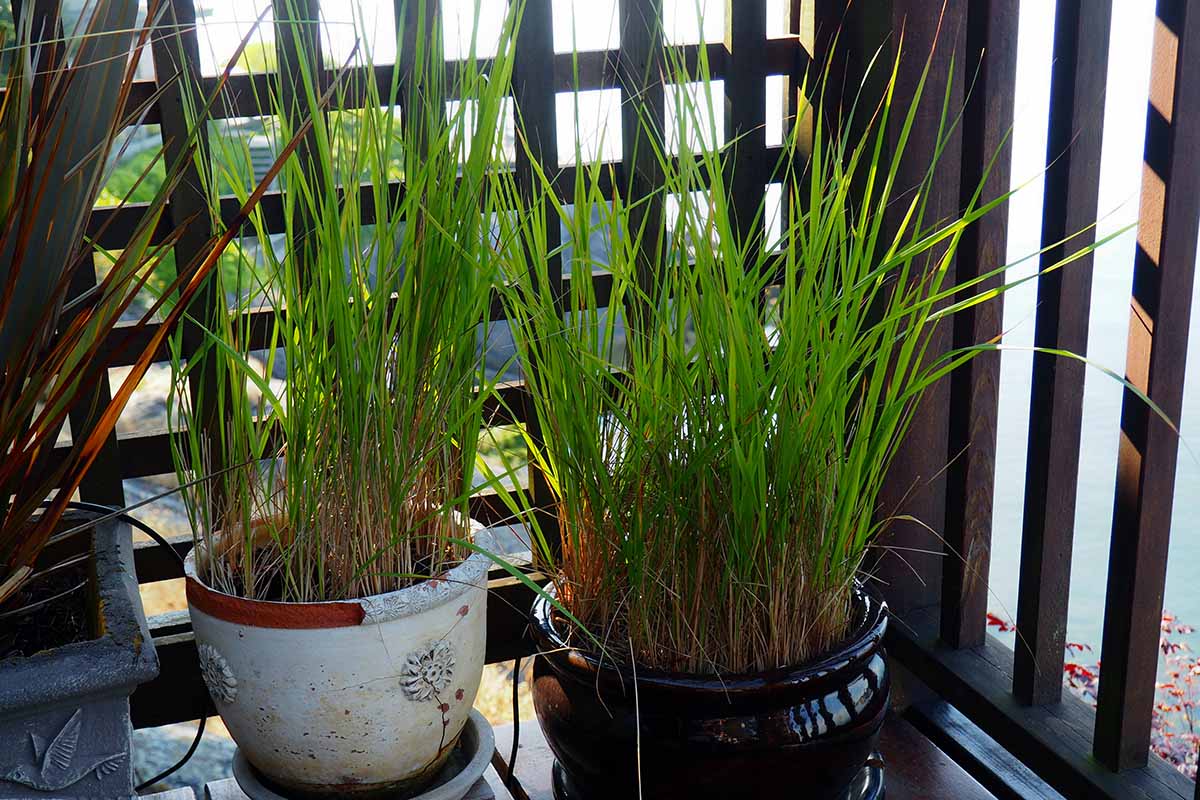Cultivation in planters and pots is a smart way to enjoy their graceful, swaying motion in small spaces, and to easily manage the spread of fast-growing types that can potentially take over the garden. We link to vendors to help you find relevant products. If you buy from one of our links, we may earn a commission. Depending on the species, foliage can be plain, spotted, or variegated, and comes in a stunning range of colors, including burgundy, copper, green, gold, gray, glaucous, pink, purple, scarlet, and silver. Some selections have fabulous, showy seed heads in shimmering shades of copper, gold, platinum, pink, and purple. And many add further interest with color-changing foliage in fall and winter. Containers provide the added versatility of being movable, so frost-tender specimens can be transported to protected locations for shelter from freezing temperatures and inclement weather. The most popular garden specimens are native or cultivated varieties from a range of plant families. These include true members of the Poaceae family, like silvergrass, plus many similar plants such as bamboo (Asparagaceae), sedge (Cyperaceae), and rushes (Juncaceae). You can learn more about ornamental grasses in our growing guide. Providing instant beauty and appeal, growing ornamental grasses in pots and planters is a fast and easy way to transform balconies, decks, patios, and small spaces. Think your garden might need some container carex or potted pampas? Then join us now for all the details on how to grow ornamental grasses in containers! Here’s what’s ahead:
Choosing a Pot
The size of container you choose will depend on the type and expected mature size of the plant you wish to grow. Pots and planters need to be deep and wide enough to accommodate root growth and foliage spread. When planting single specimens, a loose rule of thumb is to use a container that’s approximately three-quarters of the plants’ expected mature height and spread. For example, a pot with a depth and diameter of 12 inches would suit a cultivar with a height and width of around 16 inches. For mixed plantings, increase the pot size as needed. Pots can be made from materials such as glazed ceramic, plastic, resin, or terra cotta, and a saucer underneath is recommended to prevent water spilling onto decks and patios. Ensure containers have adequate drainage holes to allow water to flow freely and prevent soggy soil.
Container Prep
To create the best growing conditions, avoid using garden soil which can tend to be too dense, compacting in the container and preventing proper drainage, which leads to a soggy, low-oxygen environment. However, fall plantings should be done early enough to ensure roots are well-established before freezing weather arrives – about eight weeks before the first frost date. To ensure the soil is well-draining, mix in some grit like granite chips or landscape sand. Use about two cups of grit for a 12-by-12-inch pot, adding another half cup of grit for each two-inch increase in size. Tank’s-Pro Lite Potting Mix This product contains organic compost, coconut coir, and perlite. Before planting, add in some bone meal to promote healthy root growth, according to package instructions.
Planting
Spring and fall are the best times for planting most ornamental grasses. Use small, medium, or large varieties as single specimens in pots, and small- to medium-sized ones for mixed plantings to add color, height, and texture. In mixed plantings, add grasses to the back or center as a backdrop or focal point, filling the remaining space with annuals or perennials. Make sure you always choose filler plants that have the same growing requirements, in terms of light and water. To transplant, dig a hole slightly deeper and wider than the existing pot the plant is growing in, unpot the specimen, and place it in the hole with with the crown just below soil level. Backfill with soil and tamp it down to remove air pockets. After planting, water gently and deeply until you see liquid flowing out of the bottom of the pot.
How to Grow
In general, most ornamental grasses are unfussy and can adapt to a variety of conditions. Typically, you’ll need to water deeply once per week, allowing the top one to two inches of soil to dry out between watering. But this will depend on the species you are growing. For water-loving types, such as many sedge varieties, irrigate more frequently to keep the soil moist but not wet. Most ornamental grasses prefer a full sun location, but there are shade lovers – choose a location according to the needs of the variety you are growing. Grasses are light feeders and require little in the way of supplemental fertilization. Fertilize yearly in early spring by adding a two-inch layer of organic matter such as compost or well-rotted manure around the plant. Alternatively, apply a balanced, slow-release fertilizer such as 10-10-10 (NPK) in early spring.
Pruning and Maintenance
After the growing season ends, clean up containers and remove dead or damaged stalks as well as any debris on the soil surface. Many varieties will go dormant in winter and the foliage will die back, returning in spring. Others are evergreen and retain their foliage over winter, although growth tends to stop. For plants that go dormant, in late winter before new growth emerges, cut back any remaining dead stalks, shearing to two to six inches above the soil surface. In the case of evergreen plants that retain their foliage, avoid cutting the stalks back hard – they tend to regrow slowly. Instead, in early spring before new growth emerges, use your fingers or a small hand rake to lightly lift, rake, and remove dry or dead material. Trim brown or dying tips lightly if needed. For more about pruning, read our guide to how, when, and why to cut back ornamental grasses. Ornamental grasses grow at varying speeds depending on the variety, and in general, those grown in containers need to be divided every two to four years. This will rejuvenate the plants and prevent them from becoming root bound. Division is generally done in early spring, when the plant is in active growth phase. Lift out the root ball and use a clean, sterile sod knife or garden saw to cut the roots and foliage into two or four equal parts, depending on the size of the plant. Pull out or snip away dead or damaged foliage sections and gently loosen and brush away excess soil from the roots. Replant each section with fresh soil. Learn more about how to divide perennials in our guide.
Winter Care
It should be noted that plants grown in containers tend to be a bit less hardy than those grown in the ground. If needed, move pots into a frost-free location – like beside a south-facing wall, or in a basement or shed – to avoid winter damage. Add a two-inch layer of mulch – such as leaf mold or straw – to the soil surface to provide roots with some protection against cold temperatures. However, evergreen types should be watered regularly, but less frequently, in winter – every two to three weeks should suffice to keep the soil lightly moist. If your winters feature regular rainfall, remove saucers from underneath the pots to prevent roots from standing in water. GardenWool Plant Blanket If you can’t move your containers to a protected location, you can winterize them by wrapping the pots with bubble wrap or a thermal garden blanket, like the GardenWool® Plant Blanket, available at Gardener’s Supply. Unwrap and/or move containers back to their desired locations in spring, after all danger of frost has passed. Remove any protective winter mulch and loosen the top of the soil with a small trowel. Then top-dress with a fresh layer of compost or well-rotted manure.
Where to Buy
You can generally find a selection of ornamental grasses at your local garden center or plant nursery. For best results, you’ll need to choose a species or variety that does well in your USDA Hardiness Zone, and be sure to check the expected mature dimensions. If you prefer to shop online, Nature Hills Nursery has a fabulous range of different ornamental grasses to choose from.
Lovely Colors, Fabulous Forms
Growing ornamental grasses in containers is so easy, you’ll have plenty of time to kick back and, well, watch the grass grow! Choose your pot size based on the expected mature dimensions of the plant and use a free-draining potting soil for a moisture-retentive but well-draining environment. Give plants a cleaning in late winter and fertilize in spring – then all that’s left for you to do is to admire their lovely colors and fabulous forms! What types of grasses do you folks grow in containers? Tell us about it in the comments section below and feel free to share a picture! And for more ornamental grass know-how, add these articles to your reading list next:
How to Grow and Care for Fountain GrassHow to Grow Sedge Plants at HomeHow to Plant, Grow, and Care for Purple Fountain Grass
